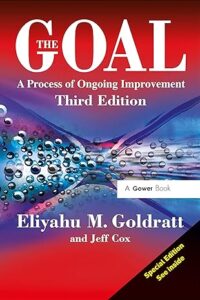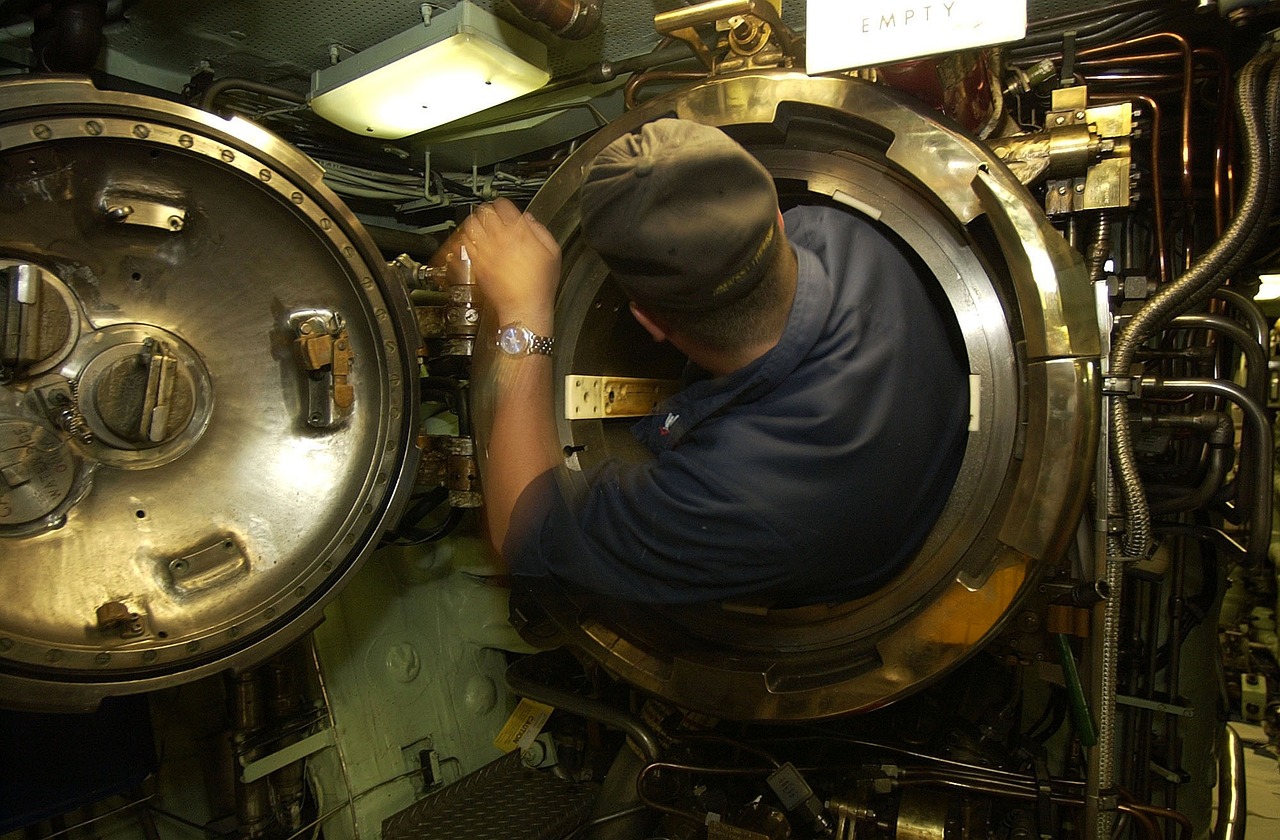Constraints are an important factor for manufacturing, process improvement and simulation. Constraints are what limit and shape your manufacturing process, they are the key to unlocking improvement, and if you have not set the constraints accurately in your simulation it will produce garbage when you start to run different scenarios.
Bottlenecks and process improvement
One of the first things you look for when you start a process improvement project is the bottleneck. The obvious feature of a bottleneck is piles of material waiting to be processed. If they have had a tidy up before the site visit, the bottleneck is apparent by the big empty space which appears to have no purpose.
When you start to investigate a bottleneck, you need to identify all the constraints that impact the process. It is very rarely a single constraint. The sort of thing you are looking for are equipment capacity, equipment availability, skilled operator availability, availability of material inputs, and the removal of finished products. And to make life tricky some of these constraints can be interdependent. A good tool to help identify all the key elements of a bottleneck process is the SIPOC diagram which I have written about in a separate article. Follow this link to read.
A rookie mistake in process improvement, is freeing up one constraint and then expecting the bottleneck to be removed. This always leads to disappointment as typically there are other constraints that maintain the bottleneck. The bottleneck is like a messy knot, you need to untangle lots of elements of the knot before you can create some slack.
Simulation of a bottleneck
Simulating a bottleneck has similar issues to process improvement. If the purpose of the simulation is to analyse a bottleneck, then you have to take care to model all of the constraints that make up the bottleneck. Again, SIPOC is a great tool here. The benefit of simulating a bottleneck is that you can virtually adjust the constraints and analyse the outcome. In this way you can direct and optimise the process improvement programme.
If you are not interested in the bottleneck, then it is fair enough to just model it as a throughput constraint and not worry about all the influencing factors.
What is a constraint?
The meaning of the word ‘constraint’ depends on your profession. In process improvement constraint and bottleneck are often used interchangeably. Where a bottleneck is the point of slowest throughput in a system. In simulation, it is sometimes used to describe factors that cannot be changed, and in mathematics it is a condition that needs to be met when solving a problem.
Personally, I use constraint to mean limited important resources. These constraints may cause persistent bottlenecks, temporary bottlenecks, or bottlenecks under very specific conditions. For example, in process manufacturing the equipment is generally the bottleneck, and labour can have very low utilisation. However, labour is often required to do an activity at a very specific time, i.e., when a batch has been completed. If the operator is required to do two activities at the same time, then suddenly, they become the bottleneck, if only for a moment.
Types of constraint
There are many types of constraint in manufacturing, here are some of the key categories:
- Resources- You need labour, materials, equipment, and energy to make products. All of these elements constrain your ability to make goods. Take labour, currently a very tight resource, you need the right number of people, at the right time, with the right skills.
- Time- There are only 1440 minutes in a day and if you waste one you will never get it back. A customer will not wait for ever for you to complete their order.
- Quality- Not all manufacturing lines have ideal process capability. If you make rubbish, you not only produce defects, but you also lose the time and money spent making it.
- Supply chain- The raw materials may exist, but if they are not in your factory, you aren’t making product. The logistics of getting raw materials to your factory also has many constraining factors and deserves an article in its own right.
- Regulations and compliance- The pesky law protects people’s health and safety, meaning things must be done properly and not necessarily quickly.
- Money- This is the ultimate constraint. You cannot spend more money making the product then you get from selling it. Well, you can, but not for long. There is no magic money tree to buy the latest and best equipment. Each improvement project and investment must meet financial rules to ensure you get good value for money with an acceptable payback period.
Theory of constraints
The first book I read about process improvement was called ‘The goal’ by Eliyahu M Goldratt. It’s a story about a Plant Manager of a failing business who has 90 days to turn things around. It is an interesting story based around the ‘Theory of Constraints’.

The theory is principally about identifying the main constraint (bottleneck) of a production process and systematically making improvements. The theory uses a five-step cycle to make continuous improvements to a system. These steps are:
- Identify the systems current main constraint. In manufacturing this can often be spotted by the piles of unfinished work sitting in front of it, or in healthcare by the large numbers of patients waiting around.
- Get the most out of the constraint. This means focus on getting the maximum usages out of the constraint. Any idle time on the constraint can never be recovered.
- Subordinate all supporting process to the constraint. Make sure all the processes and systems are optimised and prioritised towards the constraint.
- Elevate the system’s constraint. Invest time and money on improving the constraint until it no longer constrains the process.
- Repeat the process. Identify the next constraint and tackle that one, then the next one and so on.
Process improvement tools, not process improvement rules
Theory of Constraints is a useful tool, especially when there is a single big-ticket item at the heart of your system, such as an MRI scanner or large hydraulic forging press. In some industries having an expensive difficult-to-use piece of equipment at the centre of your process is unavoidable. If you can avoid it build a balanced line instead. However, those of you with the millstone around your neck, the Theory of Constraints is a useful tool.
I have experience of managing a process with a single key piece of equipment. As you have that single focus it makes it easy to create a workplace mindset and culture of ‘keep feeding the beast’. You know you have cracked it when new operators repeat the mantra back to you. This does not mean you should ignore other opportunities to improve quality, compress lead times, and reduce costs.
Whack-a-mole bottleneck
Often in process improvement you make an improvement to a bottleneck, and either nothing changes, or the bottleneck just moves elsewhere. It feels like you are playing whack-a-mole but not scoring any points. You can let your head drop or keep on grinding out the improvements. If you keep going, the cumulative effect will start paying dividends. If you want to be more focused, then map out your processes, create SIPOC diagrams of the bottleneck process and concentrate on those key constraints.
Another thing you find with process improvement is that your process is not static. Its behaviour is different during start-up compared to steady state and shut down periods. The bottlenecks can be time dependent and shift around seasons, holidays of key staff, break times, and deliveries.

Dynamic nature of bottlenecks
Production processes that are allowed to develop organically, tend to reach an equilibrium. They will never be fully balanced or resilient to all upset conditions. It is these type of production systems where the bottleneck depends on the current situation. I’ve seen food production lines that are normally stable become unbalanced after breaktimes, or when an operator with excellent skills is away and replaced by somebody with average skills, or when two processes require a resource at the same time (e.g., forklift truck movement).
This is where simulation is such a powerful tool. If you model the process and all of the constraints accurately, you can realistically simulate the production process and all its quirks. This is why we feel it is such a powerful process improvement tool.
The most extreme example of a constraint I have experienced was when I had a tour of a clean room and there was a single airlock that all people and materials had to pass through.
Feeling the constraints
It was all going so well; the tour was informative and interesting but then I started to feel a small amount of panic rising up in my stomach. I did not notice it at first but then it started to take hold. The guy showing us his etching equipment was fascinating, and really knew his stuff, but my eyes kept drifting off towards the exit. The only exit. The cleanroom suit was baggy, but it felt restrictive around my legs. Ok, distract yourself, focus on his words. This was an ISO 146444-1 class 5 cleanroom with environmental controls. So why was I feeling warm? My brain started whispering ‘just get out’ but being a brave 45-year-old adult, I stood my ground. He’s now talking about HEPA filters and recirculated air. Do they replenish the oxygen? It was starting to get a bit stuffy in here. The guy had finally stopped talking, we will soon get out.
At school there is always a kid in class that likes to ask the teacher a question at the end of the lesson. Everybody else wants to leave and get in the lunch queue before all the pepperoni slices have gone and all that’s left is mushroom. Well, my colleague was that kid. ‘How do you deal with the waste acid?’. ‘Well, that’s an interesting question’ let me talk for another ten minutes about our waste tank and pumping mechanisms…
Is there anything else you’d like to see. Yes, the airlock. I don’t care if there are four of us in a space designed for one. I want to feel the fresh fresh air of freedom. Plus, I want my lunch.
Tackling your constraints
All these constraints make up your production process, and some constraints are linked to other constraints creating a complex web of interdependences. A process map is a good place to start to help create some clarity, but if you want to see those interactions in action you need to try simulation.
Do you want to take control over your bottlenecks, then give simulation a try. Check out our service that specialises in using simulation for improvement or get in touch and we can help get you started.

